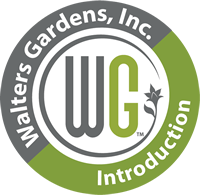Sedum 'Popstar' CPBR6264 PP31228
ROCK 'N ROUND® Collection


Common Name: Stonecrop
This low maintenance, compact Stonecrop will be the star of your late summer garden. In the summer, blue-green foliage appears on grey-purple stems with a dense, full habit, an improvement in form from the classic Sedum cauticola. In late summer to early fall, the dense mound is completely covered with creamy grey buds that burst open to cheery, salmon pink flowers. When the flowering period is finished, darker pink seed pods extend the interest of the plant further into fall.
Don't miss its darker hued counterpart, 'Superstar'!
This plant falls into a category of hardy, dome shaped Sedum hybrids. These plants typically bloom in early fall on round mushroom cap-type habits. Especially vivid when planted en masse. Through the year they showcase succulent foliage and are well adapted to low water and rock gardens. If left standing, they provide winter interest and food for birds.
The ROCK 'N ROUND™ trademark is owned by Walters Gardens, Inc.
72ct Plug Tray |
Grade #1 Bare Root |















